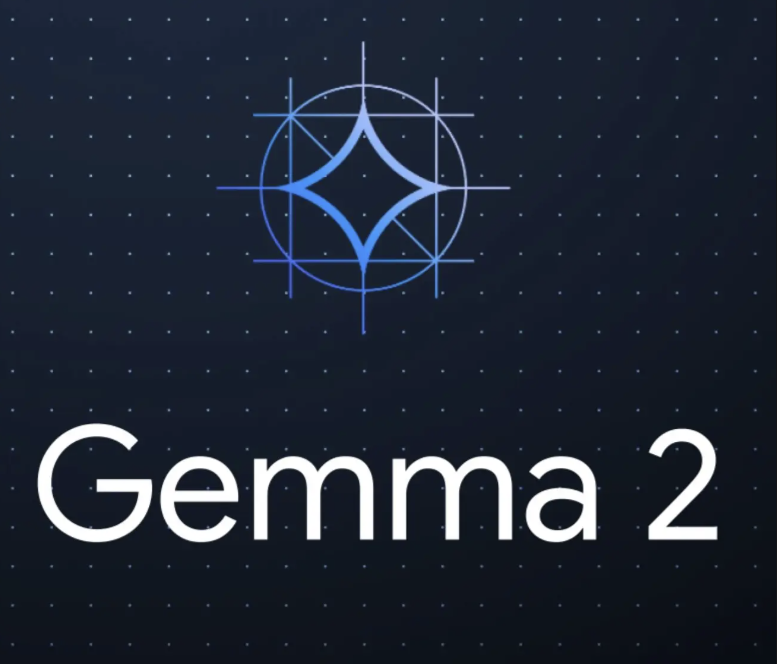Deploying Google’s Gemma on Vertex AI: A Complete Guide
In the rapidly evolving landscape of artificial intelligence, the ability to deploy and manage your own language models has become increasingly important. While hosted solutions like Google’s Gemini offer convenience, there are compelling reasons to host your own models. Today, we’ll explore how to deploy Google’s Gemma model on Vertex AI, providing you with complete control over your AI infrastructure.
Introduction
Google’s recent release of Gemma marks a significant milestone in the democratization of AI. As an open-source alternative to their hosted Gemini models, Gemma provides organizations with the flexibility to run these powerful language models on their own infrastructure. In this comprehensive guide, we’ll walk through the process of deploying Gemma on Google Cloud’s Vertex AI platform, exploring every aspect from initial setup to production deployment.
Why Host Your Own Model?
Before diving into the technical details, let’s understand why you might choose to host your own model instead of using hosted solutions:
Data Privacy and Compliance
When dealing with sensitive information such as medical records, legal documents, or proprietary business data, maintaining complete control over your data pipeline becomes crucial. By hosting your own model, you ensure that sensitive data never leaves your controlled environment, making it easier to comply with regulations like HIPAA, GDPR, or industry-specific requirements.
Responsible AI Implementation
Organizations increasingly need to demonstrate transparency and control over their AI systems. Running your own model instance allows you to:
- Monitor and audit all interactions
- Implement custom fairness metrics
- Control model behavior and outputs
- Maintain clear data lineage
- Avoid sharing potentially sensitive data with third-party providers
Performance Optimization
Self-hosting enables you to:
- Fine-tune latency for specific use cases
- Optimize hardware allocation based on your workload
- Implement custom caching strategies
- Control model quantization and optimization parameters
Technical Understanding
For organizations invested in AI technology, understanding the deployment process provides valuable insights into:
- Model serving architecture
- Resource management
- Scaling considerations
- Performance optimization techniques
Prerequisites
Before beginning the deployment process, ensure you have:
- A Google Cloud Account with billing enabled
- Vertex AI API activated in your project
- A Hugging Face account with access to Gemma models
- Basic familiarity with Python and cloud computing concepts
Understanding the Deployment Architecture
Our deployment strategy uses vLLM (Versatile Large Language Model) serving framework, which offers several advantages:
Why vLLM?
vLLM has emerged as a leading solution for serving large language models due to its:
-
Continuous Batching: Efficiently processes multiple requests by dynamically batching them, maximizing GPU utilization.
-
PagedAttention: Implements an innovative attention mechanism that significantly reduces memory usage and increases throughput.
-
Kernel Fusion: Optimizes computation by combining multiple operations into single GPU kernels.
-
Quantization Support: Offers various quantization options to reduce model size and increase inference speed.
The Deployment Process
Let’s break down the deployment into three main steps:
Step 1: Registering the Model
The first step involves registering your Gemma model with Vertex AI’s Model Registry. This process creates a versioned record of your model that can be tracked and managed.
from google.cloud import aiplatform
def register_model(
project: str,
location: str,
display_name: str,
artifact_uri: str,
model_id: str,
version_description: str,
serving_container_image_uri: str,
serving_container_environment_variables: dict,
serving_container_command: list
) -> aiplatform.Model:
"""
Register a new model in Vertex AI Model Registry.
Args:
project: Google Cloud project ID
location: Region for deployment (e.g., 'us-central1')
display_name: Human-readable name for the model
artifact_uri: GCS location of model artifacts
model_id: Unique identifier for the model
version_description: Description of this model version
serving_container_image_uri: Docker image URI for model serving
Returns:
aiplatform.Model: Registered model object
"""
aiplatform.init(project=project, location=location)
model = aiplatform.Model.upload(
display_name=display_name,
artifact_uri=artifact_uri,
model_id=model_id,
description="vLLM model for generating text",
version_description=version_description,
serving_container_image_uri=serving_container_image_uri,
serving_container_health_route="/health",
serving_container_environment_variables=serving_container_environment_variables,
serving_container_predict_route="/generate",
serving_container_ports=[8000],
serving_container_command=serving_container_command
)
return model
register_model(
project="your gcp project id",
location="us-central1", # or your preferred region
display_name="gemma-vllm",
model_id="gemma_vllm_001",
version_description="Initial Gemma vLLM deployment",
serving_container_image_uri="us-docker.pkg.dev/vertex-ai/vertex-vision-model-garden-dockers/pytorch-vllm-serve:latest",
serving_container_environment_variables={
"HUGGING_FACE_HUB_TOKEN": "hf_<your token>"
},
serving_container_command=["python3", "-m", "vllm.entrypoints.api_server",
"--model=google/gemma-2-2b-it",
"--tensor-parallel-size=1",
"--max_model_len=8126"]
)
This code does several important things:
-
Model Initialization: Uses
aiplatform.init()to set up the connection to your Google Cloud project. - Model Registration: Creates a new model entry in the Vertex AI Model Registry with:
- A display name for human readability
- The location of model artifacts in Google Cloud Storage
- A unique model identifier
- Version information for tracking changes
- Container configuration for serving
- Container Configuration: Specifies important endpoints:
- Health check route for monitoring
- Prediction route for inference
- Port configuration for network access
- Image URI
- Container commands
- Huggingface token via the environmental variables
Note about the container image
Vertex expects a very specific request - response structure. Google provide the instructions of how to build such a container and they provide a path to update the open-source vLLM implementation. Instead of patching and building our own docker image, we short cut the work by reusing the Docker image provided by Google’s model garden.
Step 2: Creating an Endpoint
The next step involves creating a Vertex AI endpoint that will serve your model:
def create_endpoint(
project: str,
location: str,
display_name: str
) -> aiplatform.Endpoint:
"""
Create a new Vertex AI endpoint for model serving.
Args:
project: Google Cloud project ID
location: Region for deployment
display_name: Human-readable name for the endpoint
Returns:
aiplatform.Endpoint: Created endpoint object
"""
aiplatform.init(project=project, location=location)
endpoint = aiplatform.Endpoint.create(
display_name=display_name,
project=project,
location=location,
)
return endpoint
This endpoint creation process:
-
Initializes the Environment: Sets up the project and location context.
- Creates the Endpoint: Establishes a new serving endpoint with:
- A human-readable display name
- Project and location specifications
- Default configuration settings
- Prepares for Deployment: Sets up the necessary infrastructure for model serving.
Step 3: Deploying the Model
The final step involves deploying your registered model to the created endpoint:
def deploy_model(
model: str,
endpoint: str,
machine_type: str,
accelerator_type: str,
accelerator_count: int,
min_replica_count: int = 1,
max_replica_count: int = 1,
) -> aiplatform.Model:
"""
Deploy a registered model to a Vertex AI endpoint.
Args:
model: Resource name of the model to deploy
endpoint: Resource name of the target endpoint
machine_type: Type of machine for deployment
accelerator_type: Type of accelerator (GPU)
accelerator_count: Number of accelerators
min_replica_count: Minimum number of serving instances
max_replica_count: Maximum number of serving instances
Returns:
aiplatform.Model: Deployed model object
"""
deployed_model = aiplatform.Model.deploy(
model=model,
endpoint=endpoint,
deployed_model_display_name=f"deployed_{model}",
machine_type=machine_type,
accelerator_type=accelerator_type,
accelerator_count=accelerator_count,
min_replica_count=min_replica_count,
max_replica_count=max_replica_count,
traffic_split={"0": 100},
sync=True
)
return deployed_model
This deployment configuration includes several important parameters:
- Hardware Specification:
machine_type: The type of VM instance (e.g., ‘g2-standard-8’)accelerator_type: GPU specification (e.g., ‘NVIDIA_TESLA_L4’)accelerator_count: Number of GPUs per instance
- Scaling Configuration:
min_replica_count: Minimum number of serving instancesmax_replica_count: Maximum number of serving instances- Enables automatic scaling based on load
- Traffic Management:
traffic_split: Controls request routing- Enables gradual rollouts and A/B testing
Alternative Serving Frameworks
While vLLM is our recommended choice, several alternatives exist:
1. FastAPI + Hugging Face Transformers
from transformers import AutoModelForCausalLM, AutoTokenizer
from fastapi import FastAPI
app = FastAPI()
model = AutoModelForCausalLM.from_pretrained("google/gemma-2-2b-it")
tokenizer = AutoTokenizer.from_pretrained("google/gemma-2-2b-it")
@app.post("/predict")
async def predict(text: str):
inputs = tokenizer(text, return_tensors="pt")
outputs = model.generate(**inputs)
return {"response": tokenizer.decode(outputs[0])}
Advantages:
- Simple implementation
- Direct integration with Hugging Face
- Flexible customization
Disadvantages:
- Limited optimization features
- No built-in batching
- Higher memory usage
2. Text Generation Inference (TGI)
TGI offers a more optimized alternative:
from text_generation import Client
client = Client("http://localhost:8080")
response = client.generate(
"What is machine learning?",
max_new_tokens=512,
temperature=0.7
)
Advantages:
- Optimized for production
- Streaming support
- Better memory management
Disadvantages:
- Less flexible than vLLM
- Limited quantization options
3. SGL Project
The SGL Project provides another approach:
import sglang as sgl
@sgl.function
def generate(prompt):
return sgl.gen(prompt, max_tokens=512)
Advantages:
- Simple API
- Good performance
- Easy integration
Disadvantages:
- Newer project
- Smaller community
- Limited features
Limitations and Considerations
When deploying Gemma on Vertex AI, be aware of these limitations:
1. Streaming Limitations
Vertex AI currently doesn’t support native streaming responses, which means:
- All responses must be returned as complete messages
- Real-time token generation isn’t possible
- Higher latency for long responses
2. Hardware Availability
Some considerations regarding hardware:
- GPU availability varies by region
- Certain GPU types may have limited availability
- Cost implications of different hardware choices
3. Resource Management
Important resource considerations:
- Memory management for large models
- GPU utilization optimization
- Scaling limitations
Best Practices
To ensure optimal deployment and operation:
1. Model Optimization
- Use appropriate quantization methods
- Implement caching strategies
- Configure batch sizes based on workload
2. Monitoring
- Set up comprehensive logging
- Monitor GPU utilization
- Track response times and error rates
3. Cost Management
- Use appropriate machine types
- Implement auto-scaling
- Monitor resource usage
Conclusion
Deploying Gemma on Vertex AI provides organizations with powerful capabilities for running their own language models. While there are some limitations to consider, the benefits of control, customization, and privacy make it an attractive option for many use cases.
The combination of Vertex AI’s infrastructure and vLLM’s serving capabilities creates a robust platform for AI deployment. By following the steps and best practices outlined in this guide, you can successfully deploy and manage your own Gemma instance.
Remember to regularly monitor your deployment, optimize based on usage patterns, and stay updated with the latest developments in both Vertex AI and the serving frameworks to ensure the best possible performance and cost-effectiveness of your deployment.



